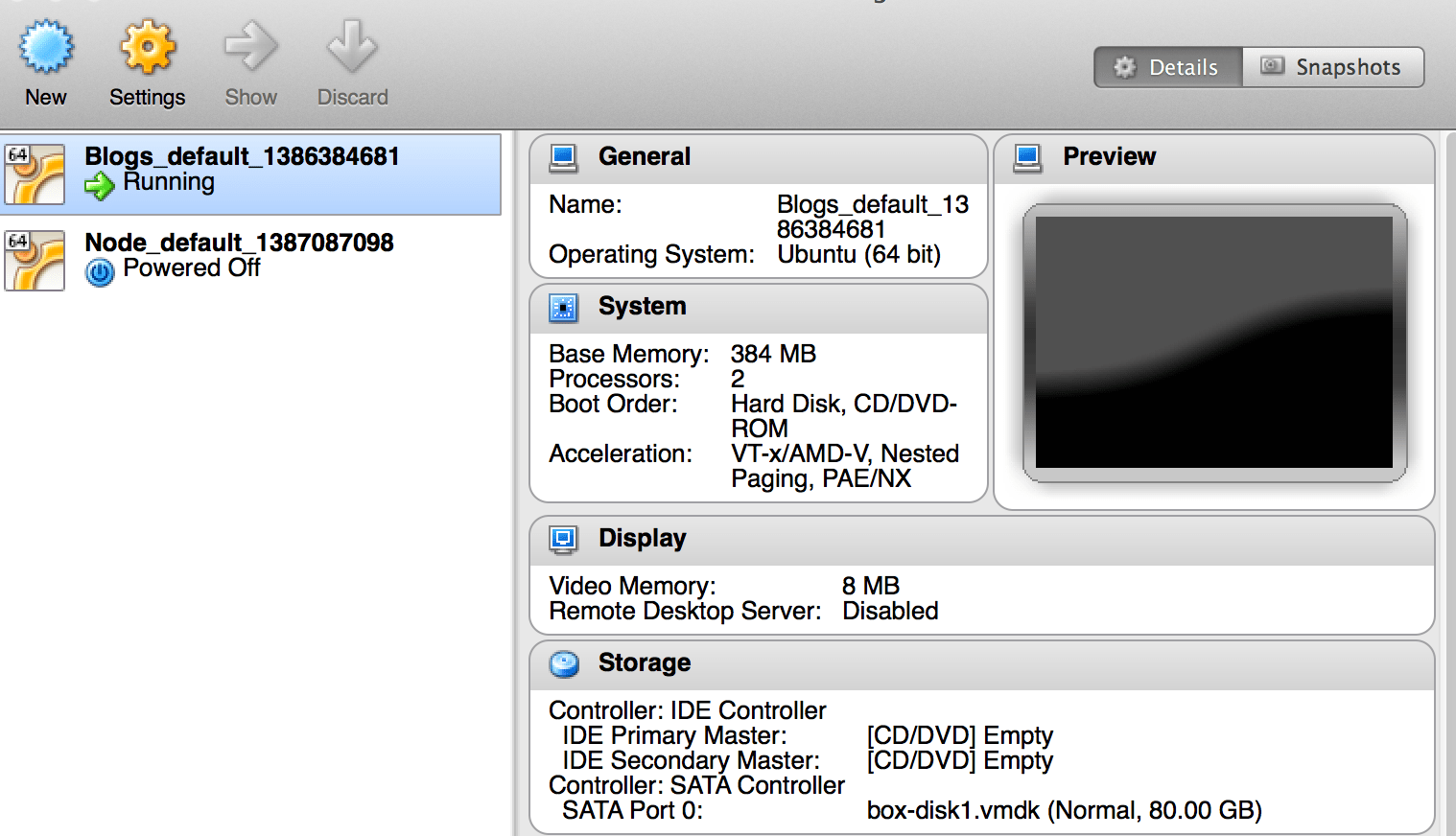
- #Virtualbox vms install#
- #Virtualbox vms code#
- #Virtualbox vms license#
- #Virtualbox vms iso#
- #Virtualbox vms free#
Location: /home/virt_box/VirtualBox VMs/TestInception 64 bit/TestInception 64 bit.vdi Location: /home/virt_box/VirtualBox VMs/TestInception 32 bit/TestInception.vdi VBoxManage: error: Context: "OpenMedium(Bstr(pszFilenameOrUuid).raw(), enmDevType, enmAccessMode, fForceNewUuidOnOpen, pMedium.asOutParam())" at line 178 of file VBoxManageDisk.cppĪh, the disk is still "in the system": VMs/TestInception 64 bit$ VBoxManage list hdds
#Virtualbox vms code#
VBoxManage: error: Details: code NS_ERROR_INVALID_ARG (0x80070057), component VirtualBox, interface IVirtualBox, callee nsISupports VBoxManage: error: Cannot register the hard disk '/media/data/winxp_vm/wim.vdi' already exists The suggestion below gives this error VBoxManage modifyhd wim.vdi -resize 20000 Is there an easy way to increase it to, say, 20 GB? I can't see any obvious option in VirtualBox settings.

It provides me with a testing lab on my laptop, obviating the need for multiple machines.I have run out of space on my WinXP virtual machine, which I only gave 10 GB space for when I created it. I intend to use VirtualBox to test Liferay on IE 6 and IE 7 without having to reboot my machine. You can find out what this is by dropping to a command prompt and typing ipconfig /all. Initially I thought I was going to have a problem trying to browse Liferay running on my Host OS, but I found that all I needed to do was use the address defined as a the Gateway for the virtualized Windows. I used the NAT networking option, as this is the easiest to get going.
#Virtualbox vms install#
You can then install your OS of choice as you would install it on a real machine.

#Virtualbox vms iso#
I say it is mostly configured because in order to install anything, you have to click the Settings button, go to CD/DVD ROM, and check the appropriate mount option (depending on whether you're installing your OS from a real CD or from an ISO image).įrom here, you just start your VM by double-clicking on it or by selecting it and hitting the Start button. When you are finished, you will have a mostly configured virtual machine, complete with a virtual hard disk that starts small but can expand in size as the VM grows. A wizard leads you through the whole process step by step. To create a new virtual machine, you click the New button in the top left corner. VirtualBox has an extremely clean and easy to use interface. They fixed the bugs in the 1.5.2 release, but Mandriva hadn't created a build for the distro yet, so I grabbed the binaries in RPM format from the web site.
#Virtualbox vms license#
The license wound up mattering to me, because the Open Source edition (1.5.0) that shipped with Mandriva had some show-stopper bugs (VMs would crash on dual core processors).
#Virtualbox vms free#
Then it's as free as Richard Stallman wants it to be. Of course, none of that applies if you use the GPL version. In other words, you can use it for your own virtualization needs, but don't run a virtual server for multiple users on it. Their definition, as I read it (IANAL, so read the license yourself), means that you are free to use VirtualBox as long as you are the only one personally using it. Innotek (the company that makes it) has a far different definition of "Personal Use" than you might imagine. They have two versions: an Open Source Edition, which is licensed under the GPL, and another version that is free for Personal Use. I figured I'd blog on it because it's a great product and not nearly as well known as VMWare or Parallels. VirtualBox comes with Mandriva, but VirtualBox works with any Linux distro, Windows, and Mac, so this should apply to everybody. So I started looking into virtualization solutions. I have a new machine that came with Windows, but since I spend 99% of my time in the Linux partition it's a bit of a pain to stop what I'm doing in my OS of choice, boot over to Windows, run some tests and stuff, and then boot back into my environment to do the rest of my work.

Since I joined Liferay, I have found that I often need Windows in order to test and debug support tickets. I have been running Mandriva since the dawn of time in Linux parlance: since it was called Mandrake and was a derivitive of Redhat. Currently, I am running the Mandriva Linux 2008 Power Pack release. My operating system of choice happens to be Mandriva Linux.


 0 kommentar(er)
0 kommentar(er)
